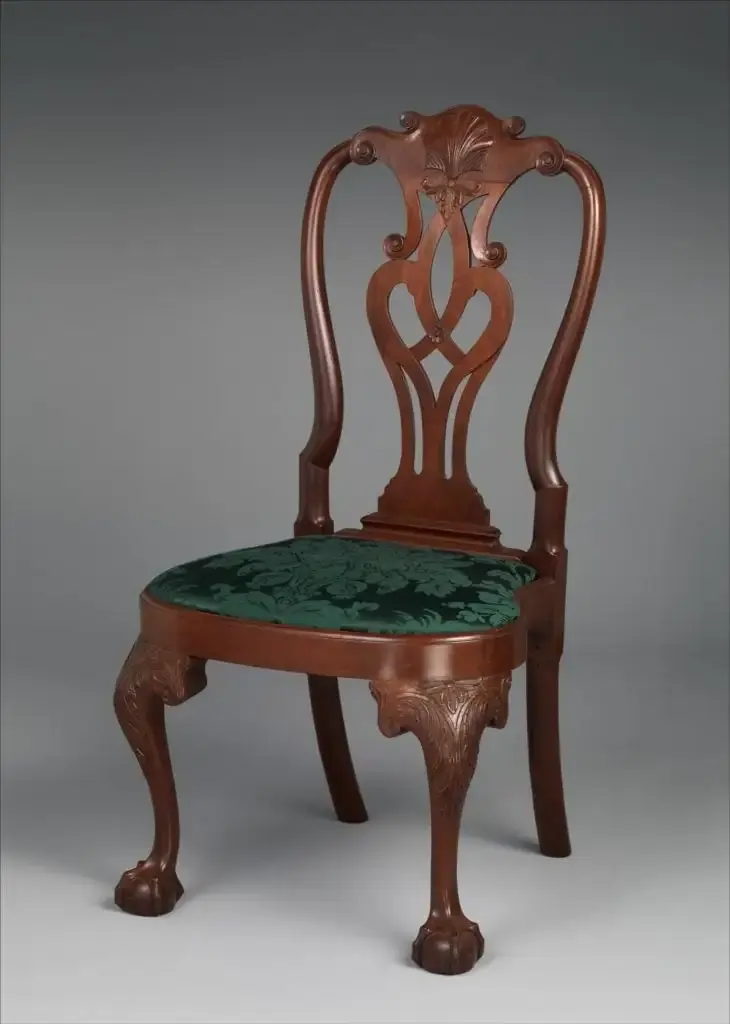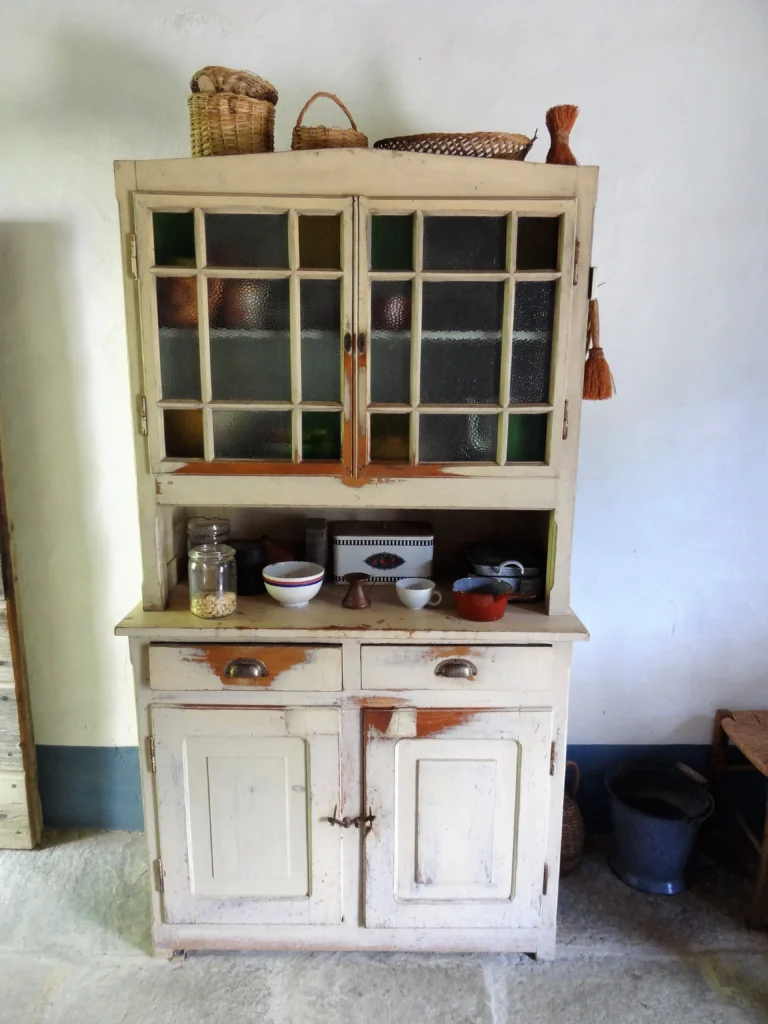Wedding traditions nowadays often bring to mind images of gowns and sparkling engagement rings; however, in the centuries a key symbol of marriage was the bridal chest. A beautifully crafted wooden box that safeguarded brides cherished belongings.
These old marriage chests have captivating tales to share about love and relationships intertwined with riches and social standing, in societies and historical eras. From containers to intricately designed masterpieces of craftsmanship. They were not just functional storage units but also significant emblems of a family’s honor and status.
Let’s delve into the history of marriage chests. Tracing to ancient times and reaching their pinnacle in the Renaissance era. Exploring their artistic development and cultural importance across different regions that lent each chest its distinctive charm.
The Evolution of Marriage Chests through Time
Let’s journey through the fascinating evolution of marriage chests, which we can trace back through centuries of craftsmanship and tradition.
Ancient Origins and Early Traditions
We can notice the first marriage chests were derived from the sarcophagi also called forzieri or cassoni. The first pieces were utilitarian in nature and used to store the bride’s clothing and other belongings that she carried to her husband’s house. The design was quite plain: They were large boxes with a rectangular shape and a rounded lid which was usually covered by textiles and were mainly produced in Florence.
Medieval European Developments
As we progress into the era we observe a change, in the design of marriage chests. By the 15th century these pieces started to showcase painted panels depicting stories and intricate details crafted in pastiglia (a molded paste application). The decoration advanced to include;
- Scenes from medieval romances
- Themes of courtly love
- Heraldic symbols of family alliances
Renaissance Golden Age of Cassoni
During the Renaissance era, in Florence was when marriage chests flourished in grandeur like never with the skilled hands of renowned artists such as Sandro Botticelli, Paolo Uccello and Donatello adorning them with intricate designs and details that mesmerized all who beheld them for the first time in wedding celebrations, across the city streets.
This era is quite intriguing, due to the evolution of these chests from storage boxes to representations of family connections. The city of Florence in the mid-fifteenth century witnessed their role as key elements in weddings as they were crafted to match the decor of the newlywed’s bedroom. As we move into the 16th century a shift occurs with carvings taking over painted motifs, like mythological beings, little angels and intricate garlands of fruits and blooms.
Artistic Mastery and Decoration Styles
Exploring the artistry of marriage chests reveals a range of decorative methods that elevated these practical items to works of artistry beyond compare. Let me guide you through the captivating realm of Renaissance craftsmanship that bestowed individuality upon every chest.
Painted Narratives and Symbolism
The exquisite marriage chests showcased stories that transcended mere embellishment as craftsmen skillfully employed these creations to narrate tales, through painted panels portraying various scenes;
- Mythological tales of love and fertility
- Historical subjects and moral exemplars
- Heraldic symbols of family alliances
- Scenes from classical literature
Woodworking Techniques and Materials
In the consideration durability of and these the amazing aesthetic pieces, value of we these see pieces. That the best choice chests of were materials made played from a walnut important and role other types is of how fine the woods craftsmen whereas used common the chests were lining made from of poplar cedar or pine. Camphor that to which repel catches our pests. Interest some of the most elaborate ones had elaborates pastiglia, which is a form of gesso relief work that added such incredible depth to the design of the panels.
Famous Artisans and Workshops
We are even more excited about the prominent workshops of Florence and Siena which were headed by master craftsmen such as Francesco di Giorgio Martini and Giovanni di Ser Giovanni Guidi, also known as Lo Scheggia, who crafted these pieces. These craftsmen went an extra mile to design each chest with the coats of arms of both families and this makes them very special pieces. Some of the workshops were dedicated to the various forms of decoration, as well as the use of intarsia and gilded gesso, which turned a simple storage chest into a work of art.
Cultural Significance and Social Status
Looking at the cultural effects of marriage chests it is interesting to notice the connections of wealth and status as well as social norms of the Renaissance society.
Dowry Traditions and Marriage Customs
Marriage chests were significant, in Renaissance weddings. Were especially prominent in Florence where they were carried through the city streets during wedding processions with displays inside such, as:
- Fine linens and clothing
- Precious jewelry
- Household textiles
- Valuable personal possessions
Family Heritage and Wealth Display
What captures our interest is the fact that these marriage chests were status symbols that reflected the social standing of the family. In a time where there were not many furniture in homes, these chests were the only piece of furniture that was found in the newlywed’s room which was adorned with it. This is something that we consider rather fascinating; even after the styles of these pieces had been considered old-fashioned, some families continued to treasure these chests and keep them stored away in attics as family heirloieces.
Gender Roles and Social Expectations
In the case of marriage chests, it is possible to observe how they depicted and supported the norms of the society. The decorative scenes were meant to be didactic especially with the aim of teaching the wife what is expected of her. In the conventional setup, these chests were usually ordered by the bride’s father as part of her dowry but this role was later taken by the groom in the 15th century. It is important to note that these pieces were used as physical symbols of the strong marriage bonds between wealthy families, which is why some of them had the coats of arms of both families on them.
Regional Variations and Influences
It is interesting to note how the traditions of making marriage chests are varied across different regions, and how every culture contributed its own touch of art to these pieces that are so dear to people’s hearts. Join me as I take you through Europe’s rich history of crafting these beautiful artifacts.
Italian Cassoni Characteristics
When we examine Italian cassoni, we’re struck by their impressive scale and sophistication. These chests were typically larger than their Northern European counterparts, ranging from 38 x 130 cm to 43 x 175.8 cm. We find they were predominantly crafted from walnut, pine, or poplar, with wealthy families often commissioning pairs of chests to display their status. What fascinates us most is how regional variations emerged within Italy itself – while Sienese artisans favored romantic themes, Florentine workshops created more didactic pieces.
Northern European Traditions
In the northern areas, we find way. The best construction ones of were marriage made chests in is German, done Swiss in or a Austrian different workshops bun and feet. had It massive is appliques the and use large of molding that seems to grab our attention because craftsmen in these regions had to find ways of working with materials such as pine; they would paint the wood to look like expensive types of wood.
Eastern European Folk Designs
The most captivating aspect of Eastern European marriage chests is their vibrant folk art traditions. We’re particularly intrigued by the Hungarian “tulip boxes,” named for their distinctive floral motifs. These pieces showcase:
- Bright, appealing colors reflecting local traditions
- Symbolic decorations specific to each region
- Distinctive patterns marking tribal identity
In Central and Eastern Europe these chests were given a lot of importance and were kept in the best room of the house and at times on a table. What makes these pieces so special is the fact that they became the bearer of some of the greatest folk art traditions of Europe and every region had its own way of designing the patterns and colors.
Conclusion
Marriage chests serve as symbols of the skills of European artisans and the social customs they represent deeply ingrained in the culture of the time period we are examining here today.
These treasured historical objects convey captivating tales, with their paintings and skilled craftsmanship that showcase regional art styles and traditions from different parts of the world.
It’s truly intriguing how these chests have managed to endure over time not as artifacts but also as glimpses, into bygone societies – shedding light on traditions surrounding marriage ceremonies and gender expectations while offering insights into the dynamics within families of the past. Some of these chests continue to be cherished within families as prized possessions passed down through generations; their intricate designs and skillful artistry serve as a timeless testament to their importance in preserving traditions, across the ages.
FAQs
Q1. What is the origin of marriage chests? Marriage chests, also known as cassoni, originated in 15th-century Renaissance Italy. They were initially simple storage containers for a bride’s trousseau but evolved into elaborately decorated pieces that symbolized love, wealth, and family alliances.
Q2. How were marriage chests used in wedding ceremonies? In Renaissance Florence, marriage chests were central to wedding ceremonies. The most elaborate examples were made in pairs and carried through city streets during wedding processions, showcasing the families’ wealth and status.
Q3. What materials and techniques were used to create marriage chests? Craftsmen used hardwoods like walnut for fine chests, while more modest pieces were made from poplar or pine. Decorative techniques included painted narratives, intarsia inlay, gilded gesso work, and pastiglia (molded applied paste) for creating depth and texture.
Q4. How did marriage chests reflect social status and gender roles? Marriage chests served as conspicuous indicators of family prestige and wealth. Their decorative scenes often portrayed moral exemplars, particularly aimed at educating wives about virtuous behavior, reflecting the gender expectations of the time.
Q5. Were there regional differences in marriage chest designs? Yes, there were significant regional variations. Italian cassoni were typically larger and more sophisticated, while Northern European chests featured bold moldings and bun feet. Eastern European pieces, like Hungarian “tulip boxes,” showcased vibrant folk art traditions with distinctive patterns and color schemes.



